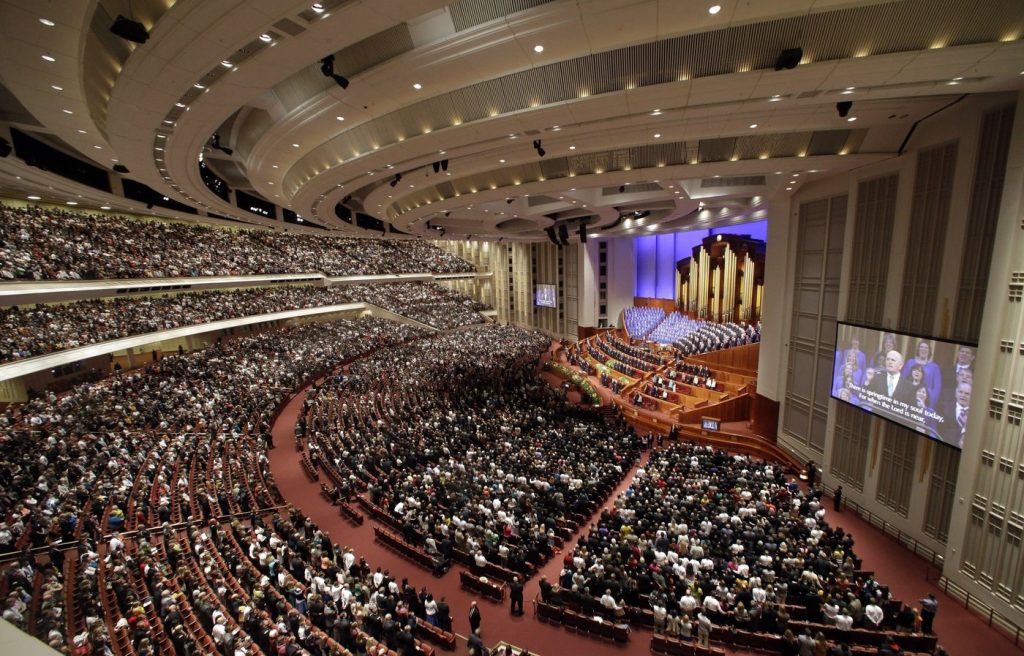SALT LAKE CITY (AP) - The Church of Jesus Christ of Latter-day Saints is set to convene for its twice-annual general conference on Saturday. This event occurs at a critical juncture in the church's history, shortly after the death of its oldest president, Russell M. Nelson, and in the wake of a devastating attack on a Michigan congregation.
President Nelson's passing creates a significant void, but the church's well-defined leadership hierarchy ensures a smooth transition. Dallin H. Oaks, who is expected to succeed Nelson, has already been a notable figure in church leadership as one of Nelson's two top counselors. It is anticipated that Oaks' ascension to the presidency will be formally announced following Nelson's funeral, scheduled for Tuesday, just a couple of days after the conference, which will attract nearly 100,000 members at the church's headquarters in Utah.
The 200-year-old denomination, often referred to as the Mormon Church, has not convened a general conference without a president for at least a century. However, experts emphasize that no leadership vacuum exists. The Quorum of the Twelve Apostles, led by Oaks, is currently overseeing the church and its more than 17 million global members in the absence of a president, reminiscent of the organization’s history following the deaths of previous leaders like Joseph Smith in 1844 and Brigham Young in 1877.
Historically, it was common for extended periods to pass before appointing a new president, as evidenced during the 19th century when leadership transitions were prolonged. The last instance of a church president dying just before a general conference occurred in April 1951, with George Albert Smith's death. His funeral was incorporated into the conference, and a new president was formally introduced during the event.
Today, it is increasingly typical for church presidents to miss conferences due to health concerns, particularly given their advanced ages. Oaks, at 93, will rank among the oldest presidents. Seven of the last nine presidents have served into their nineties, with Nelson reaching the age of 101.
Attendees at this weekend's conference are expected to feel Nelson's absence acutely, as thousands gather in person and many more connect remotely. This two-day event features sermons and serves to unify members worldwide, often addressing significant contemporary issues while allowing room for individual interpretation of religious doctrine.
Experts, like Matthew Bowman, a historian of U.S. religion, predict that Nelson's influence will loom over the gathering. Nelson, who was regarded as a prophet by church members, typically spoke at general conferences, where new initiatives and policies were regularly announced. His charismatic leadership style made him a beloved figure, and many speakers are likely to quote him as they honor his legacy during the conference.
In addition to the loss of their president, church members are grappling with the recent attack on a congregation in Grand Blanc Township, Michigan. During this tragic event, four individuals lost their lives after a gunman crashed a pickup truck into the church, fired at congregants, and set part of the building ablaze. The assailant, killed by police, held a grudge against the church, creating further turmoil within the community.
Analysts expect the conference program to remain largely unchanged, but all eyes will be on Oaks' remarks. His past addresses have often included political matters, reflecting his background as a former Justice of the Utah Supreme Court and his traditional views on marriage and religious freedom. Oaks has actively opposed same-sex marriage, a stance that has raised concerns among LGBTQ+ members and their allies.
In light of the recent violence, Oaks is likely to stress the importance of civil discourse and denounce acts of violence, themes he has previously emphasized. As he assumes new responsibilities, he might expand his focus to address broader issues of Christianity and eternity during the conference.










